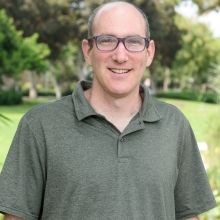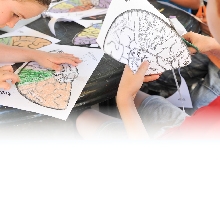Ants as political animals
One species’ secrets of social success
Features

Despite their tiny size, ants are part of a remarkably successful species that has an outsized impact on the planet. In fact, in terms of their global population’s total mass, ants are second only to humans.
According to Dr. Ofer Feinerman, ants’ and humankind’s shared place at the top of the evolutionary heap can be traced to the fact that, as “political” animals, both ants and humans have the ability to work together to achieve shared goals.
“In the popular imagination, ants are characterized as stupid and conformist, but our studies have revealed a range of complex and dynamically calibrated interactions between the individual and the collective,” says Dr. Feinerman, a member of the Department of the Physics of Complex Systems. “This makes ants an excellent model for studying social phenomena such as group action, leadership, and the handling of disagreements.”
Not your average “crazy aunt”
One of Dr. Feinerman’s investigations focuses on the longhorn crazy ant (Paratrechina loncornis), one of the most common ant species worldwide, and one of the few species capable of pulling a load collectively. By studying these ants, Dr. Feinerman’s team has identified and quantified a number of social “tipping points” - including one that defines the balance between conformism and individual action.
In a recent publication in the eLife, Dr. Feinerman demonstrated that, when an individual ant finds food worth gathering, it returns to the nest using a stop-and-go motion, repeatedly laying down small scent markers which - like the pebbles in the story of Hansel and Gretel - lead other ants to the target. But once the “moving crew” arrives, the carrier ants - none of whom has all the information required to chart the best route - lay down short, additional markers representing their own scent-based “suggestions” about directional strategy. And while these suggestions may be wrong, and although the collective doesn’t follow the new markers with 100% accuracy, it all works out: by exploiting the limited knowledge of individuals, such navigation results in a dynamically-blazed trail that guides the group back to the nest more efficiently than the trail marked by the original ant.
The first ant may traverse a narrow passage to reach the food, one that would block a large group bringing the food back to the nest. However, the loose manner in which the group follows the scent signals allows it to benefit from information available to individuals, while avoiding pitfalls that, statistically speaking, may direct them toward dead ends.
“Our study probes the relation between data held by an individual, and how such data may affect group decision making,” he says. “We learned that, collectively speaking, going “off track” may bring you closer to your goal.”
Cooperation caught on camera
Dr. Feinerman has been studying ant behavior for several years, using technologies that make it possible to individually track each and every ant within a behaving colony. Using such systems, the team has been able to analyze complex group interactions involved in such behaviors as nest building and caring for offspring. And using a very special kind of “bait” - a Cheerio scented with cat food - they have also come to some specific conclusions about how ants come by their most famous skill: the successful collective transport of large objects many times heavier than their individual body weight.
“We’ve learned that, in group transport, there has to be a balance between leaders and conformists for the group to function effectively, and have also been able to identify the moment when group conformity kicks in, something that allows a leader to take control and change direction.” Dr. Feinerman says. “We’ve also discovered that each leader's role is short-lived. After 10 to 15 seconds, the leader loses its sense of direction and becomes just another ‘conformist’ in the crowd.”
What interests Dr. Feinerman most about ants is the opportunities ants provide to analyze the power of the group on the philosophical level.
“In biology, almost everything lives in a group, from the cells in our body to ants, to colonies of bacteria,” he says. “By studying core principles defining interactions within dense, communicating and difficult to understand ensembles, we’re clarifying the social dynamics of life. Not only is this fascinating on the theoretical level, it’s also the practical basis of getting anything done.”
Dr. Ofer Feinerman is funded by the Clore Foundation and the European Research Council. He is the incumbent of the Shlomo and Michla Tomarin Career Development Chair.

Queen ant along with progeny and larvae. The tiny ant bar codes are clearly visible.








